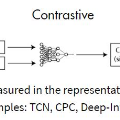Graph Contrastive Learning (GCL) establishes a new paradigm for learning graph representations without human annotations. Although remarkable progress has been witnessed recently, the success behind GCL is still left somewhat mysterious. In this work, we first identify several critical design considerations within a general GCL paradigm, including augmentation functions, contrasting modes, contrastive objectives, and negative mining techniques. Then, to understand the interplay of different GCL components, we conduct extensive, controlled experiments over a set of benchmark tasks on datasets across various domains. Our empirical studies suggest a set of general receipts for effective GCL, e.g., simple topology augmentations that produce sparse graph views bring promising performance improvements; contrasting modes should be aligned with the granularities of end tasks. In addition, to foster future research and ease the implementation of GCL algorithms, we develop an easy-to-use library PyGCL, featuring modularized CL components, standardized evaluation, and experiment management. We envision this work to provide useful empirical evidence of effective GCL algorithms and offer several insights for future research.
翻译:虽然最近已经取得了显著进展,但GCL的成功仍然有些神秘。在这项工作中,我们首先在GCL总范式中确定了几个关键的设计考虑,包括扩增功能、对比模式、对比性目标和负面采矿技术。然后,为了了解GCL不同组成部分的相互作用,我们针对不同领域数据集的一套基准任务进行了广泛和有控制的实验。我们的经验研究为有效的GCL提供了一套一般的收据,例如,产生微小的图表观点的简单地层扩增能够带来有希望的业绩改进;对比模式应当与最终任务的微粒相一致。此外,为了促进未来研究和便利GCL算法的实施,我们开发了一个容易使用的图书馆PyGCL,其中包含模块化的CL组件、标准化的评价和实验管理。我们设想这项工作是为了提供有效的GCL算法的有效经验的有用证据,并为今后的研究提供一些洞察力。


